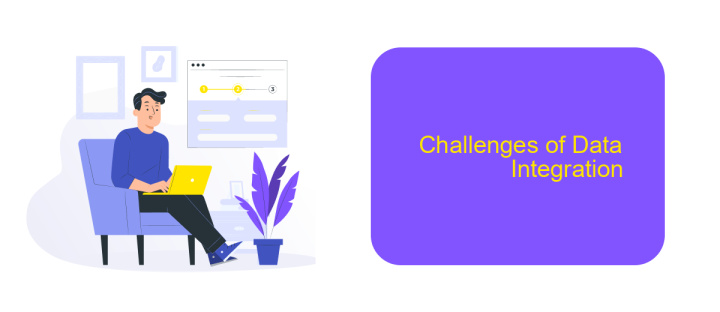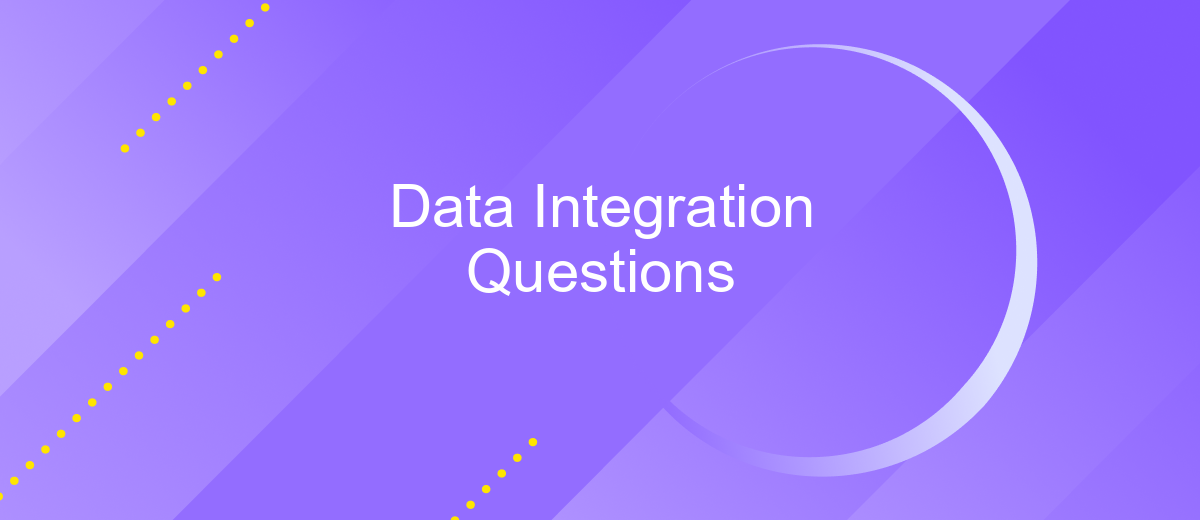Data Integration Questions
Data integration is a critical aspect of modern business operations, enabling seamless collaboration and informed decision-making. As organizations strive to harness the power of diverse data sources, they often face numerous challenges and questions. This article aims to address the most common data integration questions, providing insights and solutions to help businesses streamline their data management processes effectively.
What is Data Integration?
Data integration is the process of combining data from different sources to provide a unified view. This process is essential for organizations that need to consolidate information from multiple systems to make informed decisions and improve operational efficiency. Data integration can involve various techniques, including data warehousing, ETL (Extract, Transform, Load), and real-time data integration.
- Data Warehousing: Storing large amounts of data from different sources in a centralized repository.
- ETL: Extracting data from various sources, transforming it to fit operational needs, and loading it into a target system.
- Real-time Data Integration: Synchronizing data in real-time across different systems to ensure consistency and accuracy.
Effective data integration helps organizations achieve a comprehensive view of their data, leading to better insights and decision-making. Tools like ApiX-Drive simplify the integration process by allowing users to connect various applications and automate data workflows without the need for complex coding. This ensures that data from different sources is seamlessly integrated, enhancing the overall efficiency of business operations.
Types of Data Integration

Data integration can be broadly categorized into several types, each serving distinct purposes and use cases. One common type is manual data integration, where data from different sources is manually collected, cleaned, and consolidated. This method is often time-consuming and prone to human error but can be useful for small-scale projects or one-time data merging tasks. Another type is middleware data integration, which involves using intermediary software to facilitate data exchange between disparate systems. Middleware acts as a bridge, ensuring smooth data flow and compatibility between different applications and databases.
ETL (Extract, Transform, Load) is another prevalent type of data integration, particularly in data warehousing and business intelligence. This process involves extracting data from various sources, transforming it into a suitable format, and loading it into a target system. ETL is highly automated and efficient for handling large volumes of data. Additionally, iPaaS (Integration Platform as a Service) solutions like ApiX-Drive offer cloud-based integration services that streamline the process of connecting different applications and automating workflows. ApiX-Drive, for instance, enables businesses to easily set up and manage integrations without extensive technical expertise, enhancing operational efficiency and data accuracy.
Benefits of Data Integration

Data integration is a pivotal process for modern businesses, enabling them to consolidate disparate data sources into a unified view. This integration facilitates better decision-making, improves operational efficiency, and enhances data accuracy. By merging data from various systems, organizations can gain comprehensive insights and drive strategic initiatives more effectively.
- Improved Data Accuracy: Data integration reduces the chances of errors by synchronizing data across multiple sources, ensuring consistency and reliability.
- Enhanced Decision-Making: Unified data provides a holistic view, empowering stakeholders to make informed decisions based on comprehensive and up-to-date information.
- Operational Efficiency: Streamlined data processes eliminate redundancies and manual data handling, saving time and resources.
- Customer Insights: Integrated data helps businesses understand customer behavior and preferences, allowing for more personalized and effective marketing strategies.
- Compliance and Reporting: Consolidated data simplifies compliance with regulatory requirements and enhances the accuracy of reporting.
Tools like ApiX-Drive facilitate seamless data integration by automating the process of connecting various applications and data sources. This user-friendly service allows businesses to set up integrations quickly and without technical expertise, ensuring that data flows smoothly and efficiently across all systems. By leveraging such tools, organizations can maximize the benefits of data integration and stay competitive in a data-driven world.
Challenges of Data Integration

Data integration presents numerous challenges that organizations must navigate to ensure seamless and efficient data flow. One of the primary challenges is dealing with data from disparate sources. These sources often have different formats, structures, and data quality standards, making it difficult to consolidate information into a cohesive dataset.
Another significant challenge is ensuring data consistency and accuracy. Inconsistent data can lead to erroneous insights and poor decision-making. This is particularly problematic when data is being integrated in real-time, as any discrepancies can have immediate and widespread impacts.
- Data security and privacy concerns
- Scalability issues
- High costs of integration tools and processes
- Complexity in managing and maintaining integration workflows
Services like ApiX-Drive can help mitigate some of these challenges by providing a platform that simplifies the integration process. ApiX-Drive allows for easy connection of various applications and data sources, automating data transfer and ensuring consistency. This can significantly reduce the time and resources required for data integration, allowing organizations to focus on deriving value from their data.
Best Practices for Data Integration
Effective data integration requires careful planning and execution to ensure seamless data flow between systems. Begin by clearly defining your data integration goals and identifying the data sources and destinations. Use standardized data formats and protocols to maintain consistency and reduce errors. Regularly monitor and validate data to ensure accuracy and integrity throughout the integration process. Implement robust security measures to protect sensitive data and comply with regulatory requirements.
Utilize specialized tools and services like ApiX-Drive to simplify and automate data integration tasks. ApiX-Drive offers a user-friendly interface and supports a wide range of applications, making it easier to connect disparate systems. Leverage its capabilities to schedule automated data transfers, transform data formats, and manage integrations without extensive coding. By following these best practices and leveraging the right tools, you can achieve efficient and reliable data integration, ultimately driving better business insights and decision-making.
FAQ
What is data integration?
Why is data integration important?
What are some common challenges in data integration?
How can I automate data integration processes?
What should I consider when choosing a data integration tool?
Apix-Drive will help optimize business processes, save you from a lot of routine tasks and unnecessary costs for automation, attracting additional specialists. Try setting up a free test connection with ApiX-Drive and see for yourself. Now you have to think about where to invest the freed time and money!

